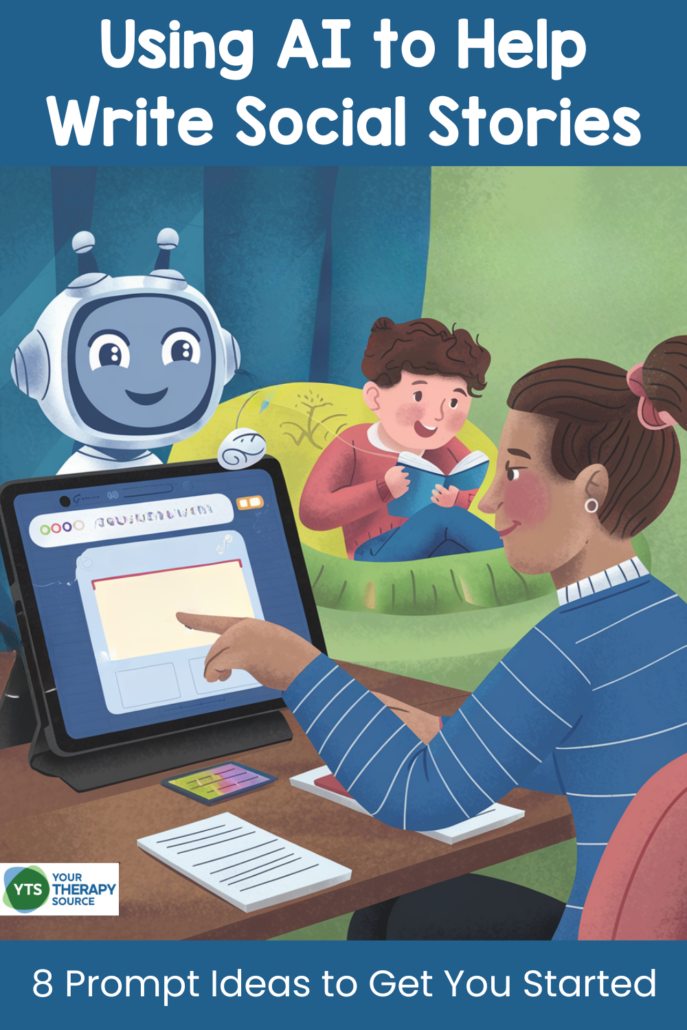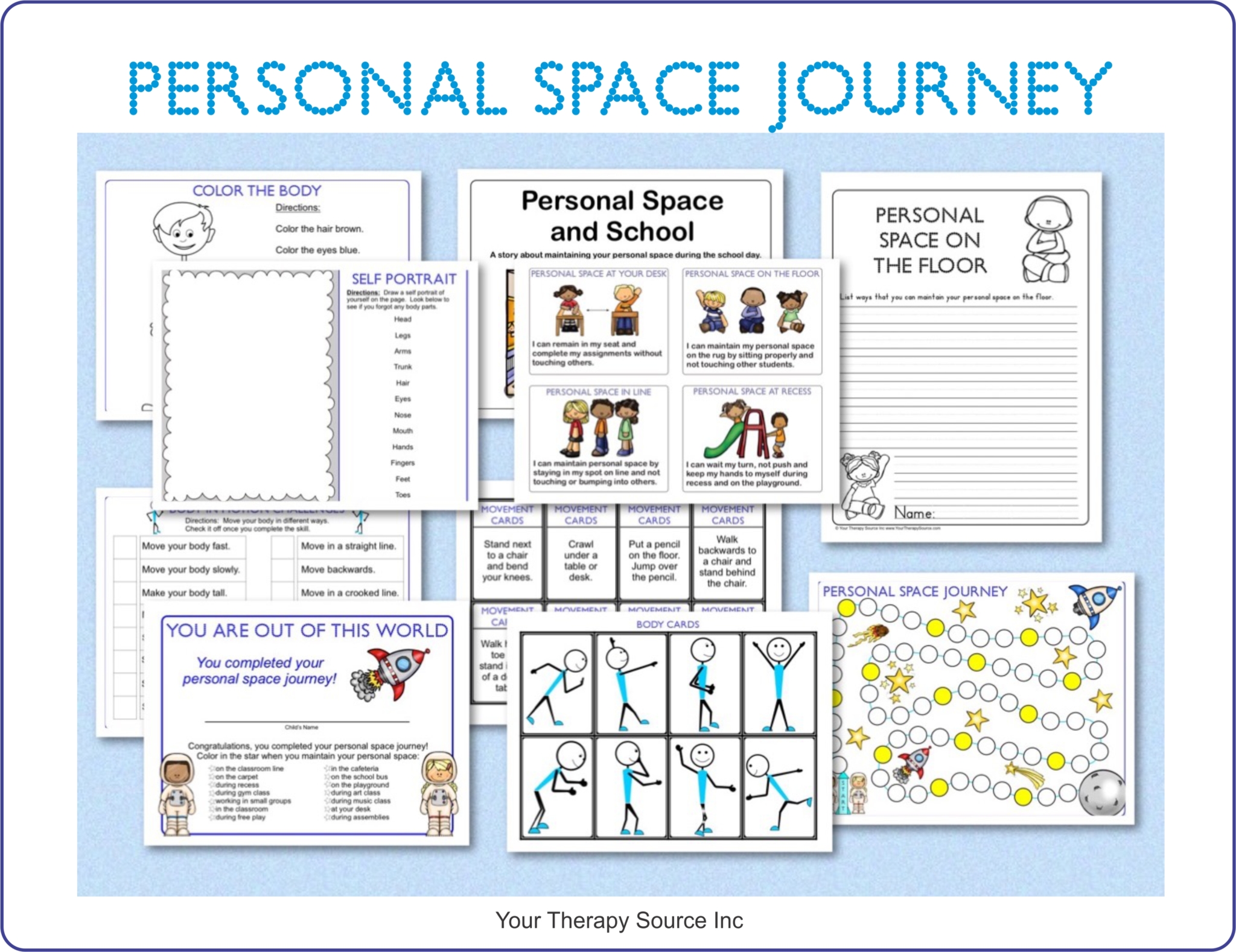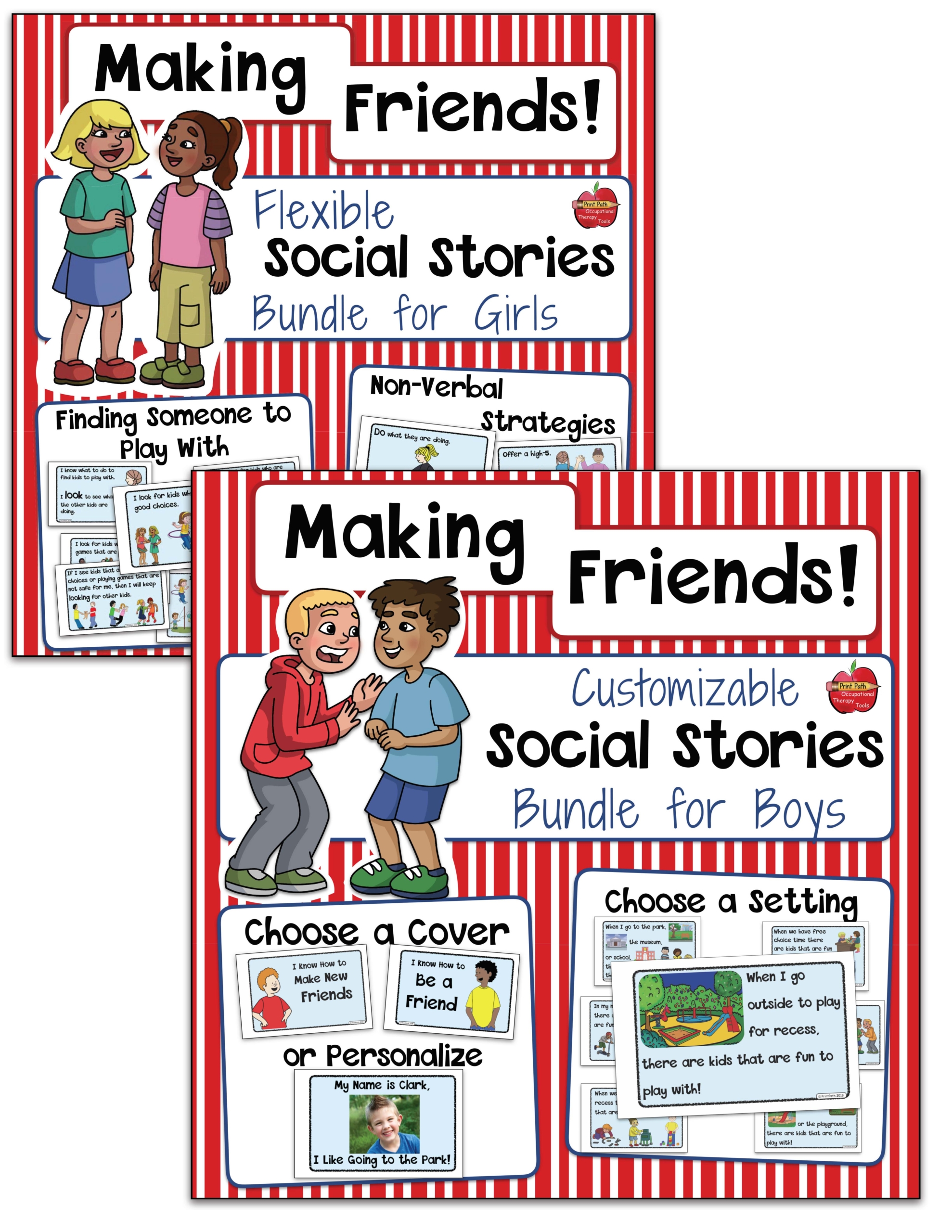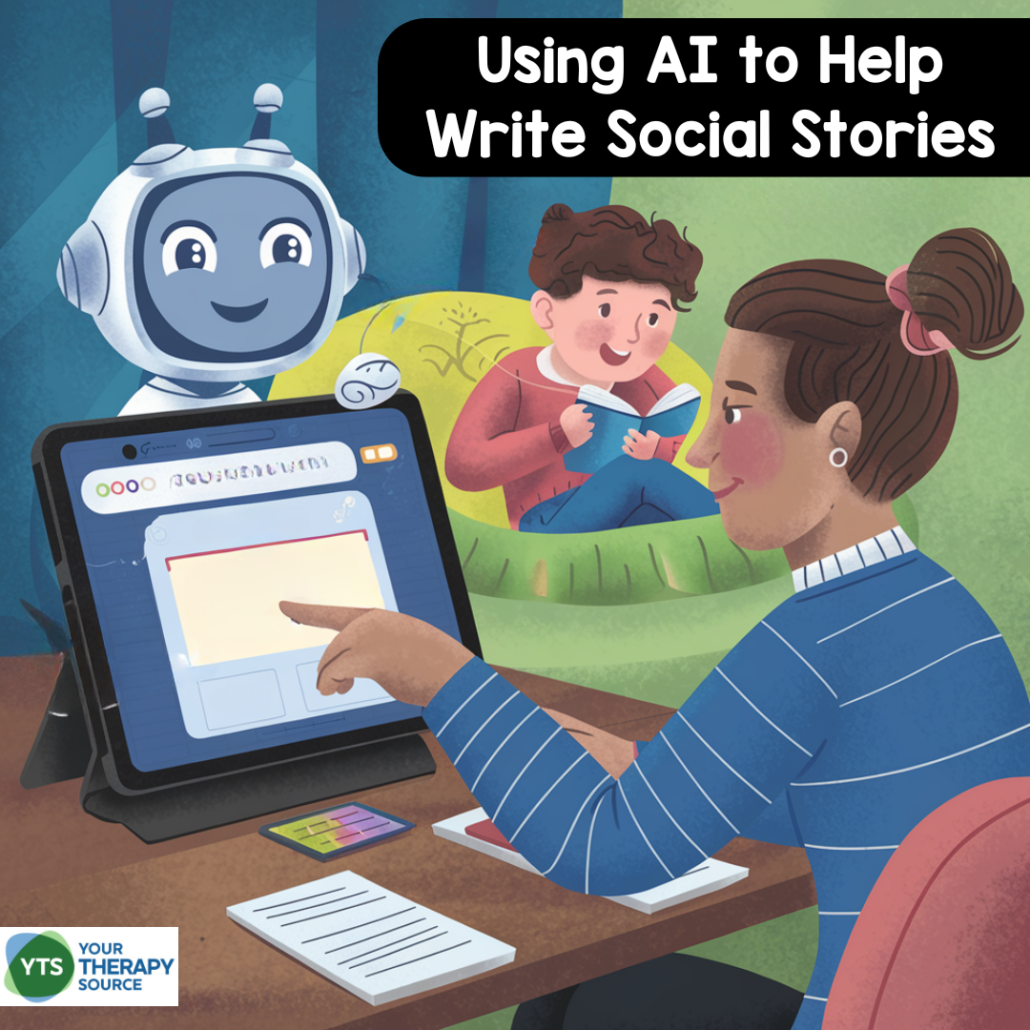Creating Social Stories with AI
Social stories are valuable tools for helping children understand social situations, emotional regulation, and everyday routines. With the help of artificial intelligence, parents, educators, and therapists can quickly generate personalized social stories tailored to a child’s specific needs. Learn more about different styles of social stories, popular topics, how AI can assist in their creation, and best practices for making social stories with AI inclusive and effective.

What Are Social Stories?
Social stories are short, structured narratives designed to teach children about social expectations and appropriate responses in various situations. Originally developed by Carol Gray, social stories follow a clear and predictable format to help children understand what to expect and how to respond.
There are different approaches to writing social stories, including:
- Carol Gray’s Social Story™ Method, which follows a structure using descriptive, perspective, directive, and affirmative sentences to explain social situations in a supportive way.
- Comic Strip Conversations, which use drawings and speech bubbles to visually explain social interactions.
- Power Cards, which incorporate a child’s special interest, such as superheroes, trains, or animals, to make learning more engaging.
- Narrative-Based Interventions, which focus on cause-and-effect relationships to help children understand the reasons behind social behaviors.
- Video Modeling & Scripted Stories, which pair visual examples with written scripts to reinforce learning through observation.
To learn more about writing social stories with visual supports, visit How to Write a Social Story with Visual Supports.
Popular Topics for Social Stories
Social stories can be used for many different situations. Some of the most common topics include:
Emotional Regulation & Coping Skills
- Recognizing and naming emotions
- Staying calm when things don’t go as planned
- Handling frustration when losing a game
- Managing big emotions like anger or disappointment
- Asking for help when needed
Social Skills & Peer Interactions
- Taking turns in conversations and games
- Understanding personal space and keeping hands to oneself
- Making and maintaining friendships
- Giving and receiving compliments
- Recognizing body language and facial expressions

Personal Space Worksheets
Classroom & School Behaviors
- Raising a hand to speak
- Following directions from teachers
- Maintaining personal space in the classroom
- Lining up and walking in the hallway
- Staying in my seat during lessons
Transitions & Unexpected Changes
- Switching from one activity to another
- Handling schedule changes, such as a substitute teacher or an assembly
- Preparing for a fire drill or lockdown drill
- Moving to a new classroom or school
Personal Hygiene & Self-Care
- Washing hands properly
- Brushing teeth every morning and night
- Getting dressed independently
- Covering my mouth when coughing or sneezing
Community & Public Behavior
- Going to the doctor or dentist
- Eating at a restaurant
- Shopping at a grocery store
- Visiting a friend’s house
Safety & Awareness
- Crossing the street safely
- Staying with a trusted adult in public
- Not talking to strangers
- Fire safety at home and school

Making Friends Social Stories for Girls AND/OR Boys – Flexible and Editable
Considering Sensory Processing and Environmental Factors
Many of the challenges addressed in social stories are influenced by sensory sensitivities, personal preferences, and the child’s environment. Before creating or using a social story, it is important to consider:
- Sensory sensitivities, such as whether the child struggles with loud noises, bright lights, or unexpected touch. Could sensory overload be contributing to difficulties with waiting, transitioning, or managing frustration?
- Environmental factors, such as whether a quieter or more structured space could help the child succeed. Would a visual schedule, timer, or sensory tool support their regulation?
- Personal preferences and interests, such as whether incorporating a child’s special interest would make the story more engaging. Would a first-person or third-person perspective be more effective?
When using AI to generate social stories, these factors should be considered when reviewing and editing the story. Some children may also need additional supports, such as movement breaks, fidget tools, or visual cues.
Social Stories and AI
AI-powered tools like ChatGPT can assist in generating structured social stories by providing a customizable framework. AI-generated social stories can:
- Save time for parents, teachers, and therapists
- Offer structured scripts instantly
- Allow for personalization, such as including the child’s name, favorite character, or specific setting
Since AI-generated social stories follow a formula, it is important to review and modify them to ensure they are accurate, appropriate, and relevant to the child’s needs. Want more information on using AI with students? Read more about Using AI to Help with Writing IEP Goals.
Reminder: Never Input Confidential Information into AI Tools
AI does not protect sensitive data, so it is essential to avoid using real names, medical history, or other private details. Instead, use general descriptions and edit the story manually afterward to personalize it.
Examples of Social Story Prompts
AI can assist in creating structured social stories tailored to a child’s specific needs. Below are prompts for generating social stories across seven common topics. Each prompt includes considerations for sensory processing, personal preferences, and environmental factors.
General Prompt to Fill in the Blanks
Create a structured social story about [insert topic] for a [insert age]-year-old child who struggles with [insert challenge]. The story should include strategies like [insert positive coping behaviors] and consider whether sensory or environmental factors, such as [insert relevant sensory issues], may affect the child’s ability to manage the situation. The setting is [insert setting], and the tone should be supportive and encouraging.
Emotional Regulation & Coping Skills
Create a structured social story about staying calm when feeling frustrated. The story should focus on recognizing big emotions, understanding that frustration is okay, and learning ways to feel better. Include strategies like taking deep breaths, using a quiet space, squeezing a fidget tool, or asking for help when needed. Emphasize that everyone feels frustrated sometimes and there are ways to handle it that help us feel better and move forward. The setting is [insert setting], and the tone should be supportive and encouraging.
Social Skills & Peer Interactions
Create a structured social story about taking turns in conversations. The story should explain that conversations work best when everyone has a chance to talk and listen. Include strategies like waiting for a pause, using a quiet hand signal, and practicing listening to understand what others are saying. Reinforce that learning to take turns makes conversations easier and helps us share ideas. The setting is [insert setting], and the tone should be supportive and encouraging.
Classroom & School Behaviors (Including Personal Space)
Create a structured social story about understanding personal space in the classroom. The story should explain what personal space is and how everyone has different comfort levels. Include strategies like using an ‘arm’s length’ rule, checking body position before moving close to others, or using a designated space during group activities. Reinforce that having personal space helps everyone feel comfortable and focused. The setting is [insert setting], and the tone should be supportive and encouraging.
Transitions & Unexpected Changes
Create a structured social story about transitioning between activities. The story should explain that sometimes we have to stop something fun and switch to something new, and that it’s okay to feel unsure or wish we had more time. Include strategies like using a visual schedule, setting a timer, or having a favorite phrase to say during transitions. Reinforce that transitions happen every day, and using strategies can make them easier. The setting is [insert setting], and the tone should be supportive and encouraging.
Personal Hygiene & Self-Care
Create a structured social story about washing hands. The story should explain why washing hands keeps us healthy and describe the steps in a simple, clear way. Include strategies like counting to 10 while scrubbing, choosing a favorite soap scent, or using a towel right away if wet hands feel uncomfortable. Reinforce that handwashing is part of our daily routine, just like eating and sleeping. The setting is [insert setting], and the tone should be supportive and encouraging.
Community & Public Behavior
Create a structured social story about visiting a grocery store. The story should explain what to expect, including bright lights, different sounds, and walking through aisles with a cart. Include strategies like bringing headphones if the store is loud, holding onto the cart for guidance, or taking deep breaths if the environment feels overwhelming. Reinforce that everyone has different ways of making grocery shopping easier, and it’s okay to use strategies that work best. The setting is [insert setting], and the tone should be supportive and encouraging.
Safety & Awareness
Create a structured social story about walking safely in a parking lot. The story should explain why parking lots have moving cars and how staying close to an adult keeps us safe. Include strategies like holding onto a cart or hand, looking both ways before stepping forward, and finding a safe waiting spot before getting into the car. Reinforce that using safety strategies helps us move through parking lots with confidence. The setting is [insert setting], and the tone should be supportive and encouraging.
By using these prompts, AI-generated social stories can be customized to address specific challenges while taking into account sensory sensitivities, personal preferences, and environmental factors. Reviewing and editing the story after generation ensures it is meaningful and effective for the child.
Watch AI Generate Social Stories
No Time to Create Your Own Social Stories?
For ready-made social stories and visual supports, check out:
- Making Friends Social Stories
- Going to the Doctor Visual Schedule
- Bathroom Social Stories for Boys & Girls
AI-powered tools can make creating personalized social stories easier, but careful review and customization are essential to ensure they are meaningful and effective.



